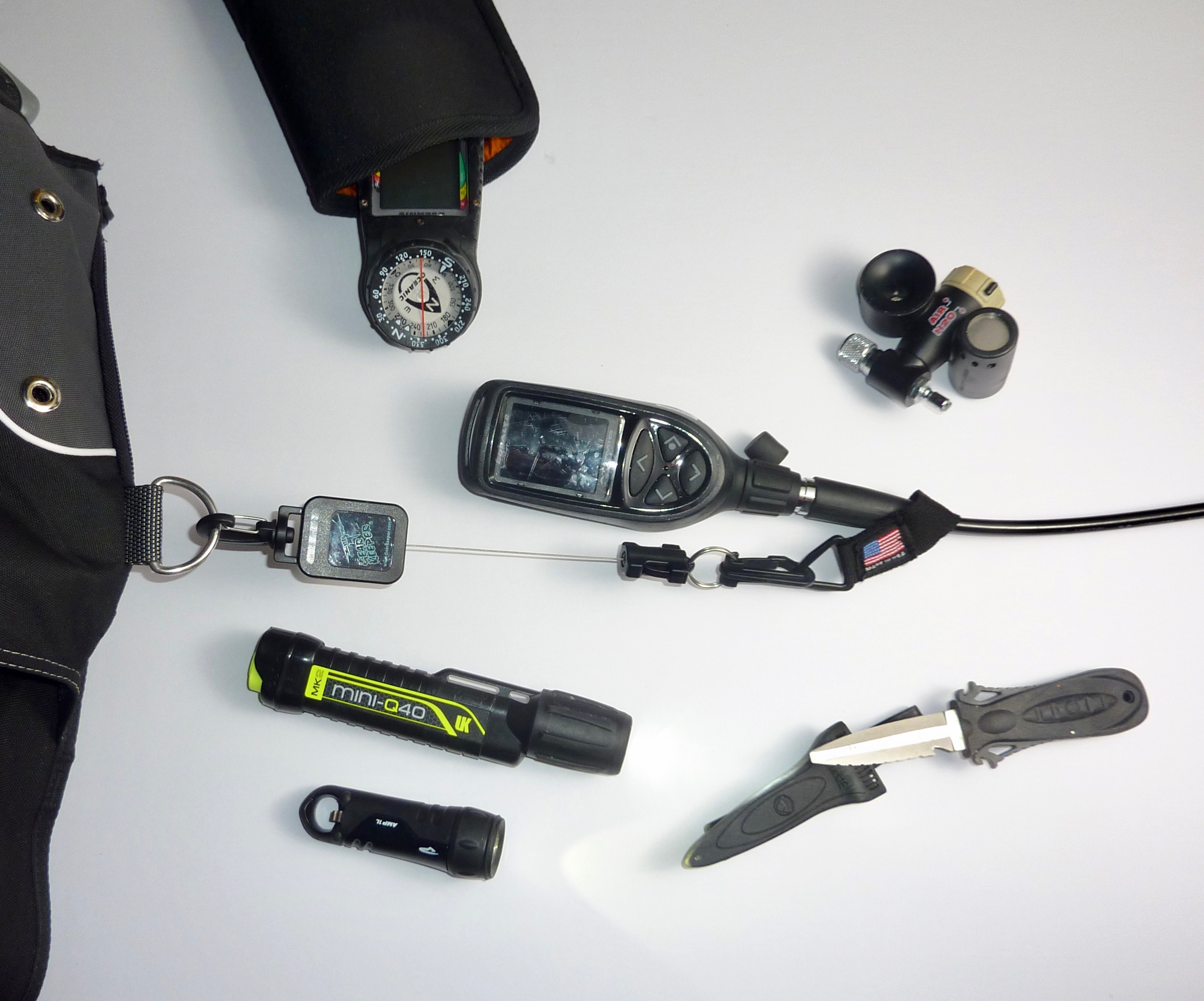While night diving we need to have three reliable dive lights — a primary, secondary or back-up light and a diver locator light. The primary is a powerful light for looking around. The secondary is a compact light of moderate power to safely surface and return to the entry point (boat or shore) should the primary light fail. A diver locator light is small and omnidirectional that shows others on shore or in a boat where a diver is on the surface. It can also assist divers in reading gauges underwater or on the surface and act as a tertiary light source.
All three of these lights are important and serve separate functions on a night dive. To short yourself in the quality of any is to possibly compromise your safety. Yet divers often give the diver locator light only a passing consideration. The dive locator light MUST be a priority. Should the night diver become separated from the boat, not able to return, or not able to return to shore, it is the ONLY way to locate the diver during hours of darkness. Consequently, this light must be reliable.
Chemical light sticks are an good diver locator light with one big disadvantage — they are not reusable. They are just thrown away and contribute to plastic pollution — not to mention that over time, they ultimately are not economical to use. Most divers have now switched over to battery operated diver location lights.
Aquatec USA, the company that has brought us the Scub-Alert signalling horn that works both underwater and above, has introduced the LED Mini-Light diver locator light. The light is small, only 4 1/4″ long and surprisingly bright. They are also remarkably solid in construction. I noticed this immediately but it became obvious when I accidentally dropped it on concret and then stepped on it and it still worked. Then I thought I’d have some fun. I threw it into the air as high as I could and let it drop to the asphalt. Still working. Wow.
The Mini-Light uses LED technology which is a solid-state light source. No bulbs to break or delicate filaments to snap. That is part of the reason for the toughness of this light. The other is a heavy machined metal battery casing, twin ‘O’-rings, and a solid plastic light spreader. It looks kind of light a mini-light sabre, for you Star Wars fans. Batteries used are three tiny LR44 cells — the kind used in some watches and calculators.
These lights come in four light colors: red, green, red and orange (my favorite). You can also get flashing or non-flashing versions. The non-flashing version (burn time 15 hours) are good for diver locator lights secured to the tank valve and for securing to your console to help in reading gauges. The different colors help identify individual divers in the dark. The flashing white light works well as an underwater locator tied under the boat or to the anchor line to give divers a point of reference. The orange flaasher is good for marking shore exit points.
The eyes adjust slowly to darkness and there is a remarkable amount of light available even without artificial light, you just have to let your eyes adjust. Finding your way around on the surface, particularly during shore dives, night vision is important, especially because your primary light often will not reach all the way to shore. On your next night dive from shore, turn off your primary light to let your eyes adjust but use a red or orange colored LED Mini-light illuminate your gauges (red and orange light effects night vision little).
The Aquatec LED Mini-Light is an excellent choice as a diver locator light for night dives. They also have other purposes as well for night diving operations. The multi-colors, modes and durability and low cost make it a valuable acquisition to the diver that likes to dive in the dark. For more information visit an Aquatec near you. To locate a local dealer call (310) 639-9860.









